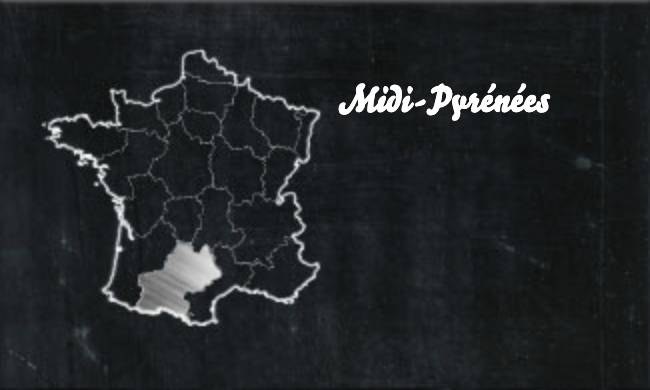A little nod to history: Bleu des Causses owes its creation to the AOC recognition of Roquefort! Though both from the same region, they differ in their main ingredient: ewe’s milk for Roquefort and cow’s milk for Bleu des Causses. Discover the character of the Grands Causses region, filled with both quiet and passionate charm!
Bleu Des Causses AOC

Origin
Characteristics
– AOC since 1953.
– Whole, raw-milk, blue-mould cheese.
– 45% minimum fat content.
– Cylinder 20 cm in diameter, 8-to-10-cm thick, weighing approximately 2.5 kg.
– Creamy, ivory-coloured cheese.
– Distinct flavour.
– Production: 860 tonnes.
Gastronomie
A minimum of 100 days are needed to make a single Bleu de Causses cheese. Thus, it is naturally between September and February, when the cows are outside, that Bleu de Causses is the most fragrant. It is delicious at the end of a meal, but also in dishes themselves, spontaneously elevating omelettes, gratins, and sauces.
White wine with bleu is the perfect combination: pair Bleu de Causses with a sweet white wine such as Côtes-de-Bergerac or even a white Floc de Gascogne.
Production
The most important step in the manufacture of Bleu de Causses is ageing. First, for about three weeks, Bleu de Causses is cosily placed on oak planks inside natural caves, exposed to the cool, damp drafts that create the blue “bloom” of the cheese (hence the name “fleurine”, a cave used for ageing cheese, which comes from the French word “fleur”, meaning “flower”). At this stage, the cheese is bitter and crumbly. It will need two to three more months of slow maturation wrapped in a sheet of aluminium (where the cheese is said to be “leaded”) in order to create a very creamy cheese with a pronounced aroma.
The origin of Bleu des Causses is intimately linked to that of Roquefort, its cousin made from ewe’s milk. Indeed, there were always one or two cows amongst the herd of ewes for the farmers’ personal consumption of milk, meat, etc. But cows are much larger animals than ewes, and what else is there to do if there is too much milk from the daily milking, other than also turn it into cheese?
And so this delicious “Roquefort-style” cheese, which was not aged in the village of Roquefort but in so-called “bastard” caves, was born. The word “style” started fading from usage, and when Roquefort was finally recognized with AOC, the makers of cow’s milk blue cheese formed the Syndicat des producteurs de bleu d’Aveyron (Union of Bleu de l’Aveyron Makers), a cheese that was itself recognised with AOC in 1953 under the name “Bleu de Causses”.
Production Area
The Causses region is characterised by large, untouched stretches of heath and rocky soil with a harsh and varied climate where cows delightedly graze on fragrant plants such as heather. The ageing of Bleu des Causses must be done in natural caves formed by limestone scree slopes, particularly in the gorges of the Tarn department.